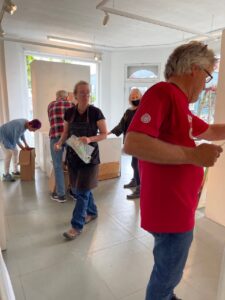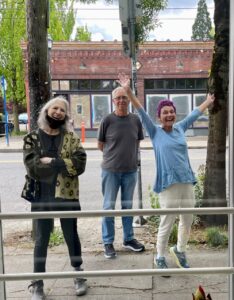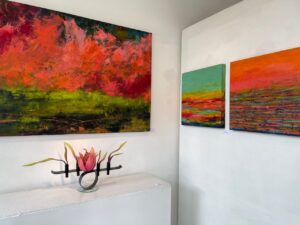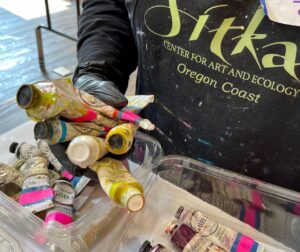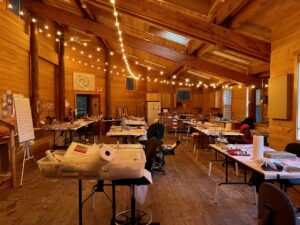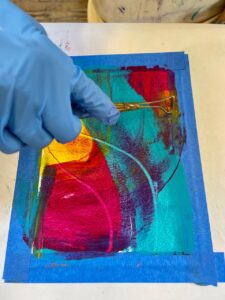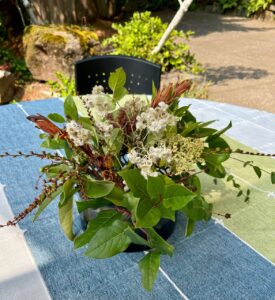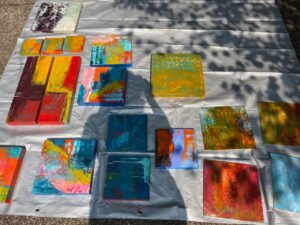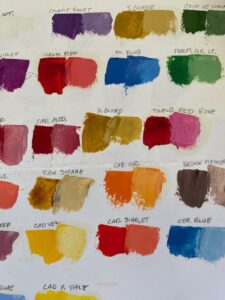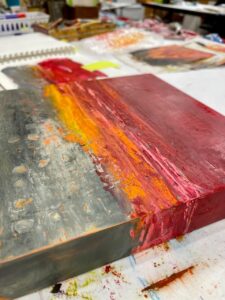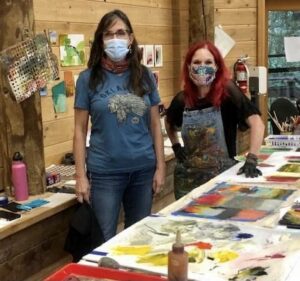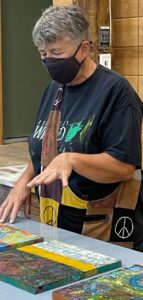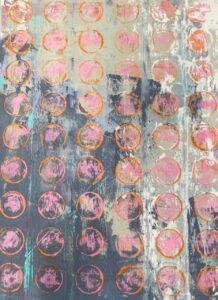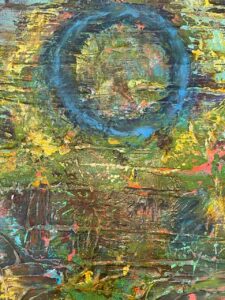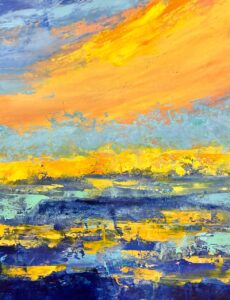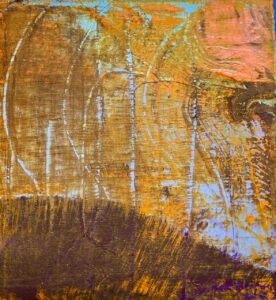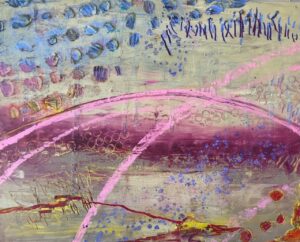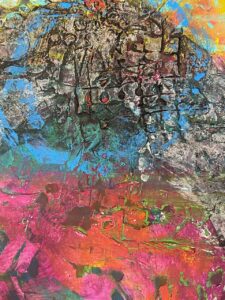
2024 was a year of transformation, in my art life and in my personal life. On the personal front, in November we sold our 1926 vintage home in Central Salem and moved into a 1960 home in suburbia. We miss the vibrancy of inner city living and the close proximity to downtown and the waterfront, but we don’t miss the constant noise of traffic or the sound of shopping carts being rolled down the middle of the street in the wee hours of the morning. On our first night in our new house, Howard said, “I can’t sleep, it’s too quiet.” We have adjusted and we’re just a ten-minute drive to downtown.

One of the first things we did once we got settled into our new house, was to build a painting studio. We went with a Tuff Shed (click HERE to see lots of photos and to read the story of the build), and it has worked out perfectly. My studio is just 16 steps from our house, close enough to slip out wearing pajamas, but removed enough to have solitude. My beautiful new studio was completed the end of January, just two months after moving into our new house.
As for teaching, I had decided in 2023 that I didn’t want to teach very much in 2024, just at Sitka Center for Art and Ecology in the summer, something I have done for many years. But things didn’t work out as planned. I ended up teaching the most I had ever taught; twice at Sitka and three times at the Art Department. I also did something I didn’t imagine doing,: I began teaching online thanks to an invitation by Martha, the owner of Winslow Art Center.
Here’s a summary of my 2024 teaching:

I developed a new class, which I titled Building Creative Muscles. I taught it at the Art Department in May and again in November, and it got added to the Sitka teaching schedule in July.

Another new class I developed this year was Lexicon of Collage. This class came out of my one collage a day in 2023, which I called my Lexicon of Collage project. I launched this new class at the Art Department in Salem in April (stay tuned for news about where I will be teaching this class in 2025).

I taught my annual five-day oil and cold wax class at Sitka in August, Wild and Free Abstracted Florals, and it was fun to teach a different subject. The class was filled with vibrant, fearless, creative artists, having fun making abstracted florals using the versatile medium of oil paint mixed with cold wax. Their paintings were stunning.

The biggest addition to my teaching schedule came with the addition of doing online classes through the excellent Winslow Art Center. Throughout the year I did some small online classes: an Art Chat (about my art journey) and a Technique Takeaway (oil and cold wax) in May, and another Technique Takeaway (making a collage using book parts) in October; and a couple of free to students short classes, one in October and another this month.

In July, I did my first official online class, Wild and Free Abstracted Landscapes in Oil and Cold Wax, and it was a great success. Winslow takes care of registration and has an excellent platform for watching the classes through Zoom, as well as a private classroom for interactions with and between students. I did a second class, Curious Untamed Blooms in Oil and Cold Wax in October. My biggest fear about teaching online has always been the technology, but Martha and her team are intimately involved with all aspects of the technology part, holding my hand and helping me solve any problems that popped up.

Outside of teaching, I was invited to serve as a juror for the biennial Word and Image show through the Hoffman Center for the Arts. It was an honor to serve as a juror, but it meant I wasn’t able to participate in the show, a favorite of mine, but I will be submitting my proposal when it is held again in two years.

One of the highlights of my year was having a show at RiverSea Gallery in July, Curious Untamed Blooms. I spent six months painting abstracted florals, pushing the design, color, and composition in fresh ways. By the time the show was ready to hang, I had painted 34 pieces: four were 20 x 20, with five 12 x 12s, several 8 x 8s, and the rest 6-1/2 x 12 inches. It was a beautiful affirmation of my work when 12 pieces were purchased from the floor – meaning, the pieces were leaned up against the wall in preparation for the hanging. What a way to open a show. In the end, I sold 28 of the 34 pieces. My heart is still fluttering.

On a more personal note, I took a couple of classes at Sitka. One in June with Ken Marunowski, Painting the Abstract Impressionist Landscape and Abstract Sketching and the Creative Process in September with Lauren Ohlgren. Both were excellent classes and enrichened my own painting and drawing life.

My personal transformation began in July after my show opened at RiverSea Gallery. In looking at photos of myself, it hit me how much weight I had gained since 2023 and especially through all the stress of packing for our move, having a gigantic garage sale to downsize so many years of collections, and then the move itself. So when I looked at my photos after my opening, I had a light bulb moment that I wanted to make some changes; they weren’t big changes, but I reevaluated what I was eating and trimmed down some of the types of food I was eating (POPCORN being a huge delight and culprit), and I upped my daily steps (I was already averaging 12,000 a day, but I increased it to 14,000 a day). But the biggest change I made was joining a Club Pilates that was four blocks from our new house. It was the biggest game changer. I had heard of Pilates since forever, but had never done it and didn’t even know what it really was. I learned that Club Pilates offers Reformer Pilates, which I absolutely had never heard of. Reformer Pilates involves equipment, (and some say the reformer bed is a torture bed). I took a beginner class, and I was hooked. I love the Flow classes, which are whole body workouts, focusing on core work and stretching, weights are involved, as are a lot of springs. If you don’t know what Reformer Pilates is, just Google it to get an idea.
So here I am five months later, down 33 pounds, and feeling the best I have ever felt. My word for 2024 was TRANSFORMATION and it was a year of transformation. In my art because of my teaching schedule and my shift to abstracted florals, and in my personal life because I looked at myself and knew I wanted a transformation.

My word for 2025?
Radiance.


